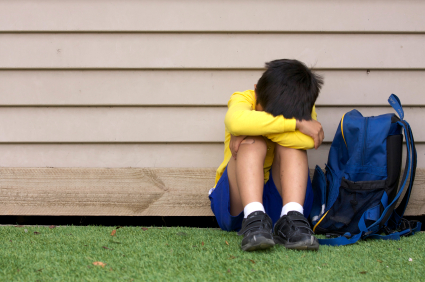
Worry, worry, worry.
There’s an awful lot of it about.
Anxiety disorders are a major concern in modern society and it seems that the levels are escalating faster than we can brings things under control – especially in the under 25’s.
Anxiety commonly develops from being under prolonged severe stress, when you no longer feel as if you can control a situation. It’s not much fun suffering from anxiety and many people will describe how they find it virtually paralyses their ability to function normally.
Feeling over-stressed causes you to experience a physiological response: the sweaty palms, nausea, butterflies, pounding heart and shallow breathing. Stress itself is a worry because of its association with anxiety, depression and cognitive impairment.
It has been recognised for sometime that our emotions are contagious.
If you are with someone who is angry, you will share their anger.
If they are sad, you will feel blue as well.
But did you know that watching someone who is stressed causes you to experience a stress response too?
I recently had a discussion with a Primary School teacher who shared her concern about the increasing number of her charges exhibiting marked symptoms of anxiety in the class room. And this was in Year One!
She couldn’t put her finger on why this should be, until the first teacher-parent evening of the term. What she saw that night were multiple sets of parents all exhibiting symptoms of anxiety.
So what is happening here was that the children were experiencing second hand stress.
Studies from the Max Planck Institute for Cognitive and Brain Sciences and University of Dresden have noted how raised stress levels in a test group (measured as increase in cortisol levels) produced an increase in cortisol levels of observers watching the test. The increase was an average of 26%, rising to 40% if the observer was in a couple relationship with the person they were observing.
Other studies have shown that inducing stress i.e. causing an increase in heart rate in a mother leads to an increased stress response with an increased heart rate then recorded in their babies.
What this means is that is that it is important to monitor for signs of second hand stress in yourself, and in your family and to put in place those strategies to help build resilience and coping skills.
Managing second hand stress.
1. Start with awareness and check in.
How are you feeling? Is there something worrying you? Is there something you are aware of that may be triggering stress?
2. Label it, if you can identify the cause.
Watching your child perform at school in front of their peers and other parents is a common example of where your child’s nervousness is something you then share.
Perhaps you have seen a colleague get really angry with another person. Did that cause you to experience stress?
3. Put in place a stress reduction activity such as doing some physical exercise. Exercise has been shown to help the brain to actually reorganise itself so it becomes more resilient to stress. Running for example causes new neurons to be produced in the area of the brain called the hippocampus, which is helpful in the regulation of anxiety.
4. Practice a relaxation exercise such as deep breathing or mindfulness meditation.
5. Discuss feelings and emotions as a normal part of family conversation. Being open about how we feel and manage our lives is an important part of building resilience and coping skills.
Does stress play an over active part in your life?
Is second hand stress, something you have been aware of in the past and if so how did you manage it?
Refs:
Engert, V., Plessow, F., Miller, R., Kirschbaum, C., & Singer, T.
Cortisol increase in empathic stress is modulated by social closeness and observation modality. Psychoneuroendocrinology, 17 April 2014
“Physical Exercise Prevents Stress-Induced Activation of Granule Neurons and Enhances Local Inhibitory Mechanisms in the Dentate Gyrus,” was published May 1 in the Journal of Neuroscience.

